Piero Lissoni uses Barcelona Pavilion marble in tables for Salvatori
Italian architect Piero Lissoni has designed a series of bistro tables for furniture brand Salvatori, with marble left over from famous buildings including Mies van der Rohe's Barcelona Pavilion.
The Lost Stones bistro tables, presented during Milan design week, have round tops that are all made from broken scraps of marble.
The slabs were left over from construction of numerous famous buildings: the Barcelona Pavilion, St Peter's Basilica in the Vatican, Notre Dame Cathedral in Paris and the Seagram Building in New York.
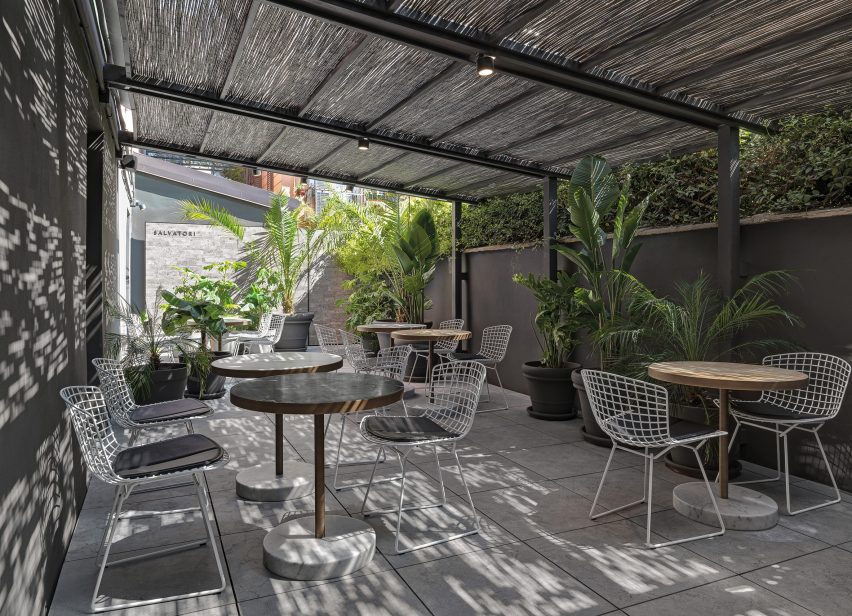
Salvatori, which specialises in products made from natural stone, already had some of the slabs in storage. They were used in place of newly quarried marble.
"The idea arose from the fact that I got really fed up with the fact that companies in general produce without too much attention to what we use and to our planet," explained Gabriele Salvatori, CEO of the brand.
"One day while I was walking inside our slab yard and I saw a bundle of slabs, one of those things you barely notice anymore because they're just part of the furniture," he told Dezeen.
"I realised we had a treasure chest, as most of the quarries those stones came from are now closed."
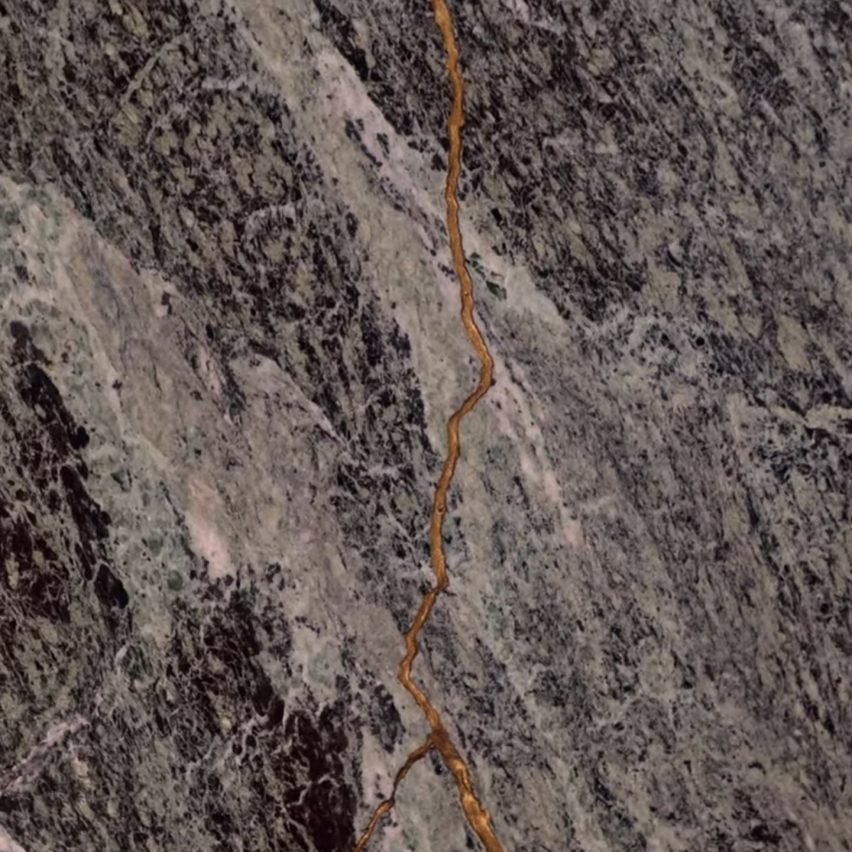
The slabs were used to create simple tables, informed by the classic piece of furniture found in French bistros. The circular tabletops are edged with brass, and stand on brass stems that attach to a round Bianco Carrara marble base.
Lissoni and Salvatori also looked to other stone yards to find different varieties of marble for the project.
"We don't need to quarry anything, we just start cleaning up anything we already have," said Gabriele Salvatori, who compared the process of using abandoned marble to going to the dog-rescue shelter, rather than buying a pedigree dog.
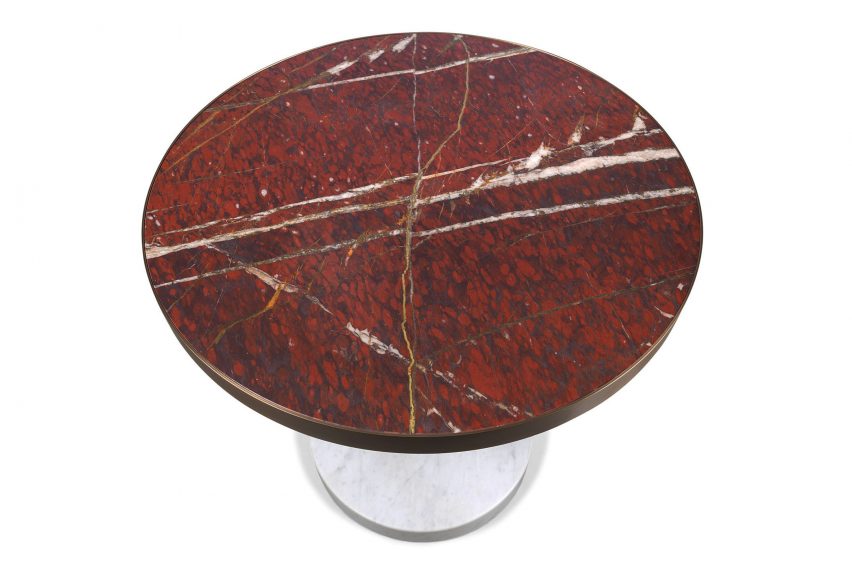
Forest-green marble used is the same as used in the Barcelona Pavilion and the Seagram Building, while terracotta-toned marble comes from Notre Dame Cathedral. The marble from St Peter's Basilica is a shade of yellow.
Some of the marble pieces had a low market value because they were not high quality, while others had simply fallen out of fashion. There were limited quantities of each stone, and many of the slabs were cracked or distressed.
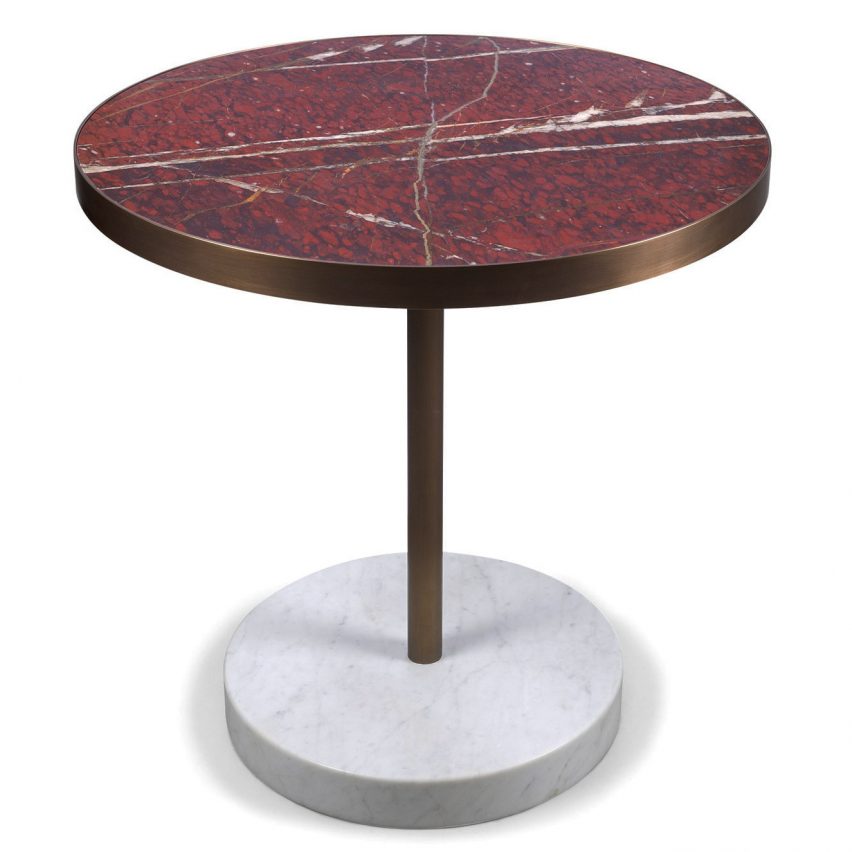
The scraps were joined together using kintsugi – a Japanese technique in which broken shards of a material are rejoined, with the fault lines deliberately highlighted in gold.
"With kintsugi, the Japanese don't throw broken things away, they find a way to reuse it, which I find very romantic," said Gabriele Salvatori.
Since marble is a natural product, the colour of the stone varies as the quarry digs further into the mountain over the years, meaning that an exact colour match for the Vatican marble, for example, can only be found in pieces dug at the same time.
"Through the years, as you cut into the mountain the colour of the marble changes, so that part was probably coming from the upper part of the quarry, which doesn't exist anymore. So to get that exact marble is impossible," said Gabriele Salvatori.
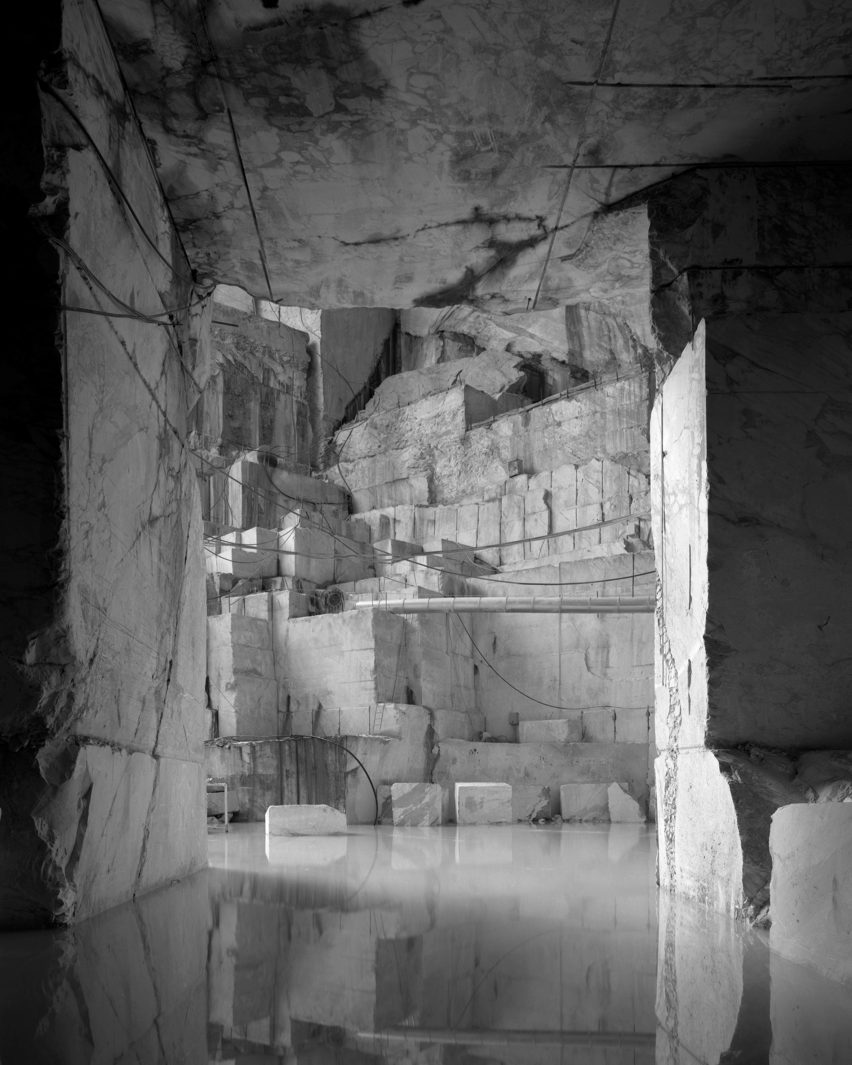
Lost Stones forms a part of Salvatori's Hidden Rooms exhibition during Milan design week, designed by architect and interior designer Elisa Ossino.
Gabriele Salvatori's apartment in Brera, just around the corner from the company's showroom was also designed by Ossino, to showcase the company's marble and create a convivial space for entertaining friends.